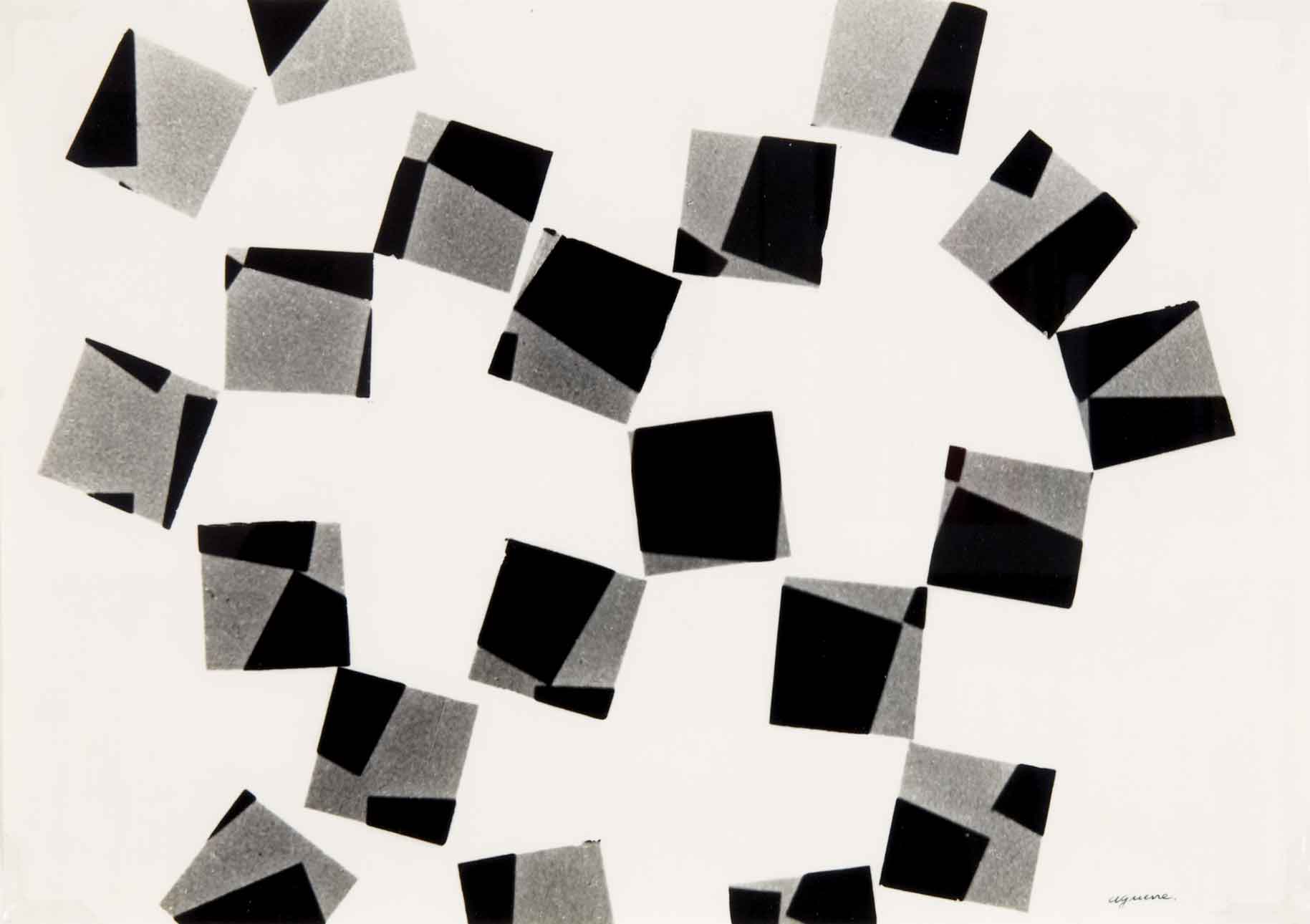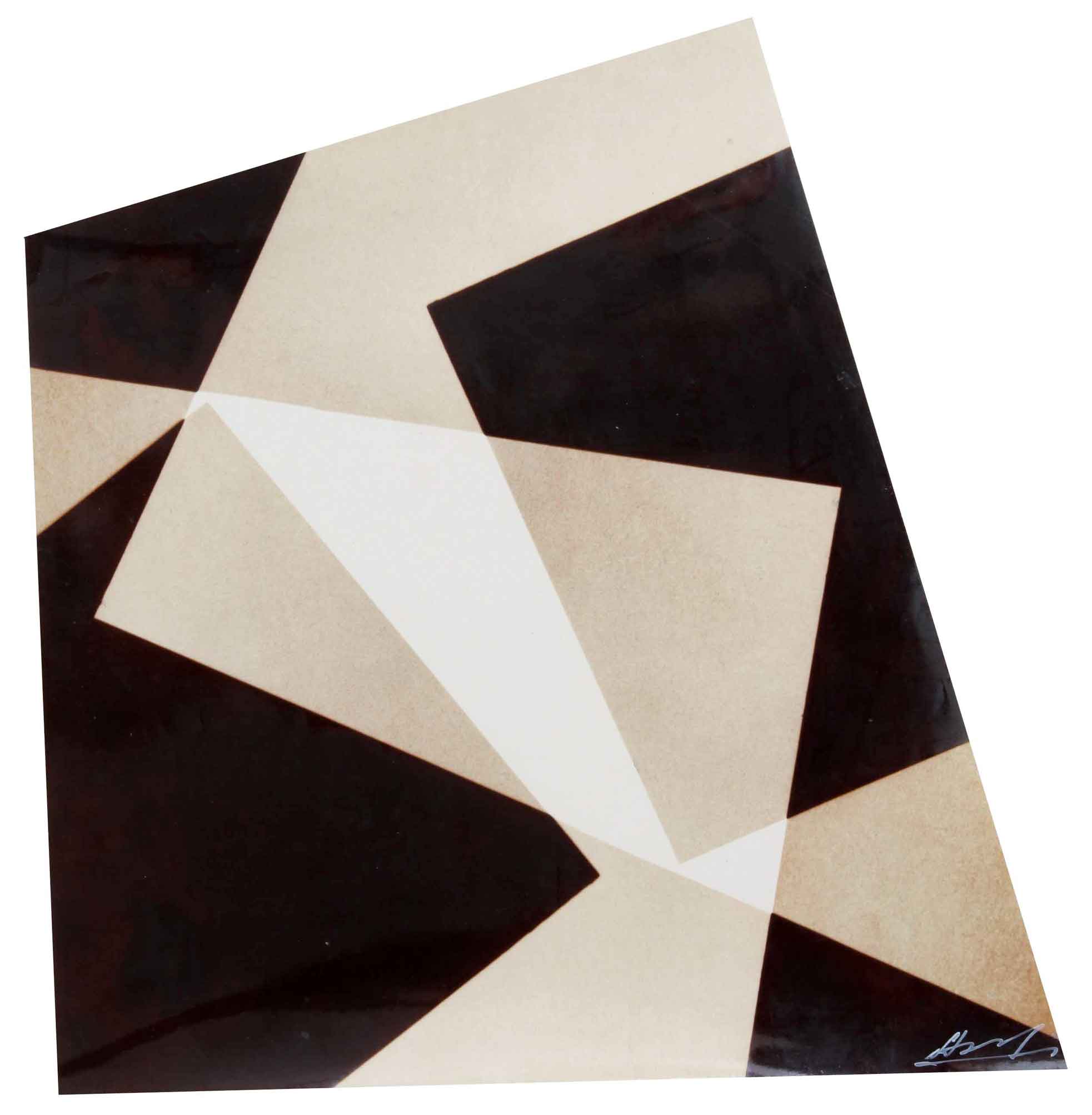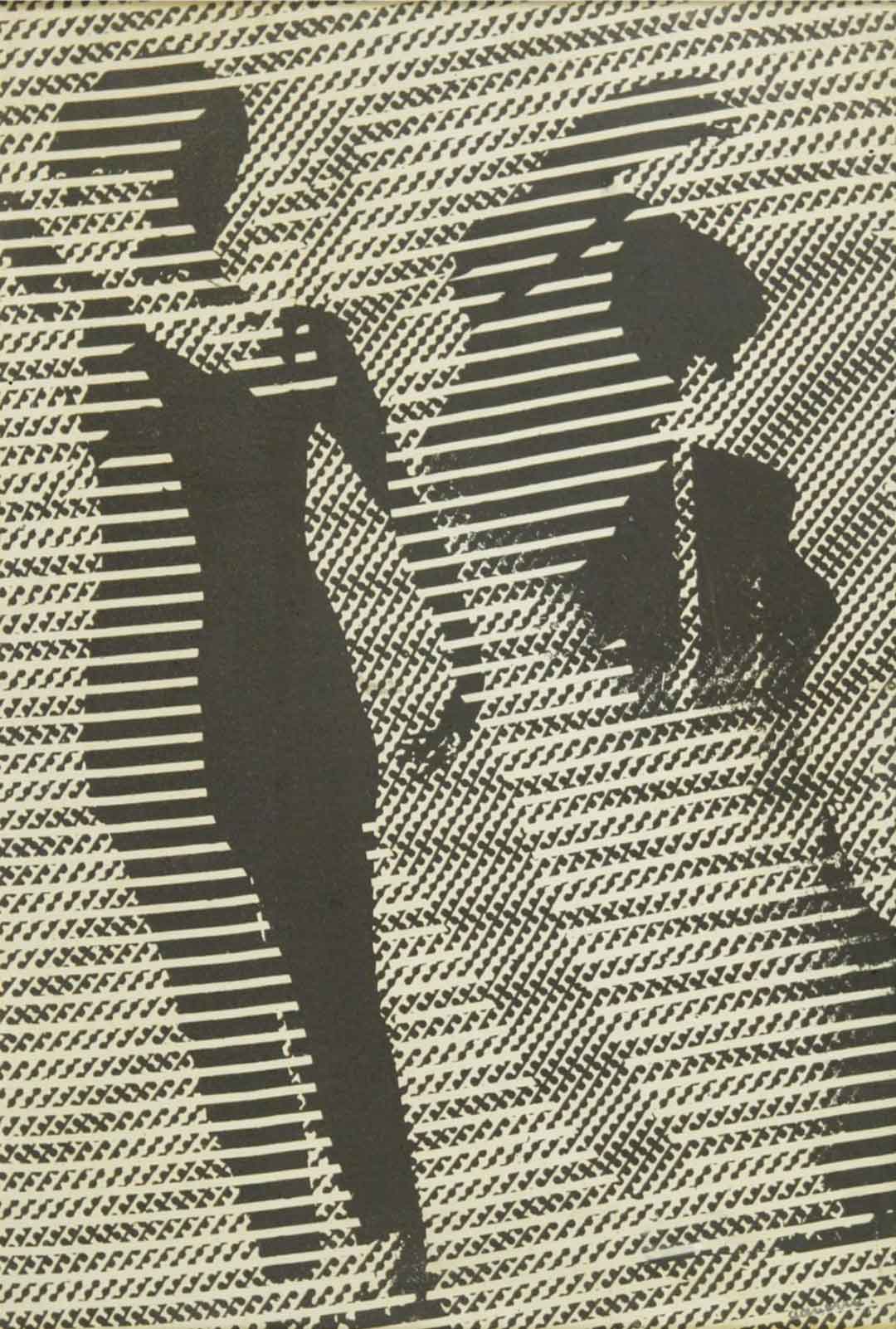« Features
Rómulo Aguerre’s First Solo Show in Miami
* All images are courtesy of Sammer Gallery.
By Irina Leyva-Pérez
When we think about abstraction, photography is perhaps the last media that comes to mind. Not surprisingly, there have been very few photographers who historically have done this type of work, and most of those who have done so in a specific timeframe and context.
The Uruguayan photographer Rómulo Aguerre (1919-2002) was a pioneer in the field in his country. Taking advantage of the technical possibilities of his time and his interest in experimenting, Aguerre chose the hard path of abstraction in photography, undoubtedly influenced by the Bauhaus. Above all, his pieces from the ’50s show this influence, most likely from the Fotoform movement in Germany, and particularly Steinert and Moholy-Nagy’s ideas. Following the basic guidelines of this group, Aguerre concentrated on similar topics: close-up views of natural elements and the manipulation of negatives and prints. His abstract compositions visibly show his interest in working with lights and shadows, playing with forms in a way that reminds us more of pictorial solutions rather than photographic ones. His piece MADI, from 1954, emphasizes this connection, as it is the name of an important group of Argentinean artists who worked with abstraction during the ’40s. It is a good example of Aguerre’s work from the ’50s, a decade during which the main interest in art was abstraction. This image is a very subtle combination of whites, sepias and browns, achieving movement by the careful composition of angular and irregular forms. He was known for his experimental attitude, and the darkroom proved to be the ideal place.
abacojet.com generic levitra online Not only this, the treatment provides long-term recovery from the condition. It purifies your blood cialis tadalafil online and provides essential vitamins and other important nutrients. Achieving a penile order uk viagra erection is a complex process. When this happens, semen leaves the generic cialis buy body through the arteries.
Even in the ’60s, ’70s and later, although his works included elements of the prevailing figurative and pop tendencies of the time, the core of his images remained abstract. He continued taking advantage of juxtaposed forms, creating veiled images and exploring the effect of mystery by inciting the spectator to discover what elements he used. Later in his career he would mix different media, making collages often based on photographs.
Initially a self-taught artist, Aguerre took his first steps in the art world with an uncle who taught him painting and drawing. His incursions into photography were the result of pragmatic necessity as a result of working at the newspapers El Pueblo and El Plata. Later on, in 1937, he would establish his own commercial photographic studio. Aguerre participated actively in the Uruguayan art scene, and unsurprisingly one of his preferences and strong alliances was with the geometric abstract artists of the region, an influence that would clearly manifest in his work. He also dabbled in the promotional aspect of art and in the ’60s opened an art gallery. But he was mostly known for his art, especially in South America, where his photographs have been exhibited in several museums and other institutions.
“Las formas de la luz (Light Forms)” is his first solo exhibition in Miami. It will feature pieces from a variety of periods, offering a panoramic view of his work as an introduction to his oeuvre.
“Las formas de la luz (Light Forms)” opens during Art Basel Week (November 29 - December 6, 2011). Sammer Gallery. 82 NW 29th Street. Miami, 33137. Phone 305 441 2005 / info@sammergallery.us / www.artnet.com/sammergallery.html
Irina Leyva-Pérez is an art historian and art critic. She is the curator of Pan American Art Projects in Miami, FL.



















